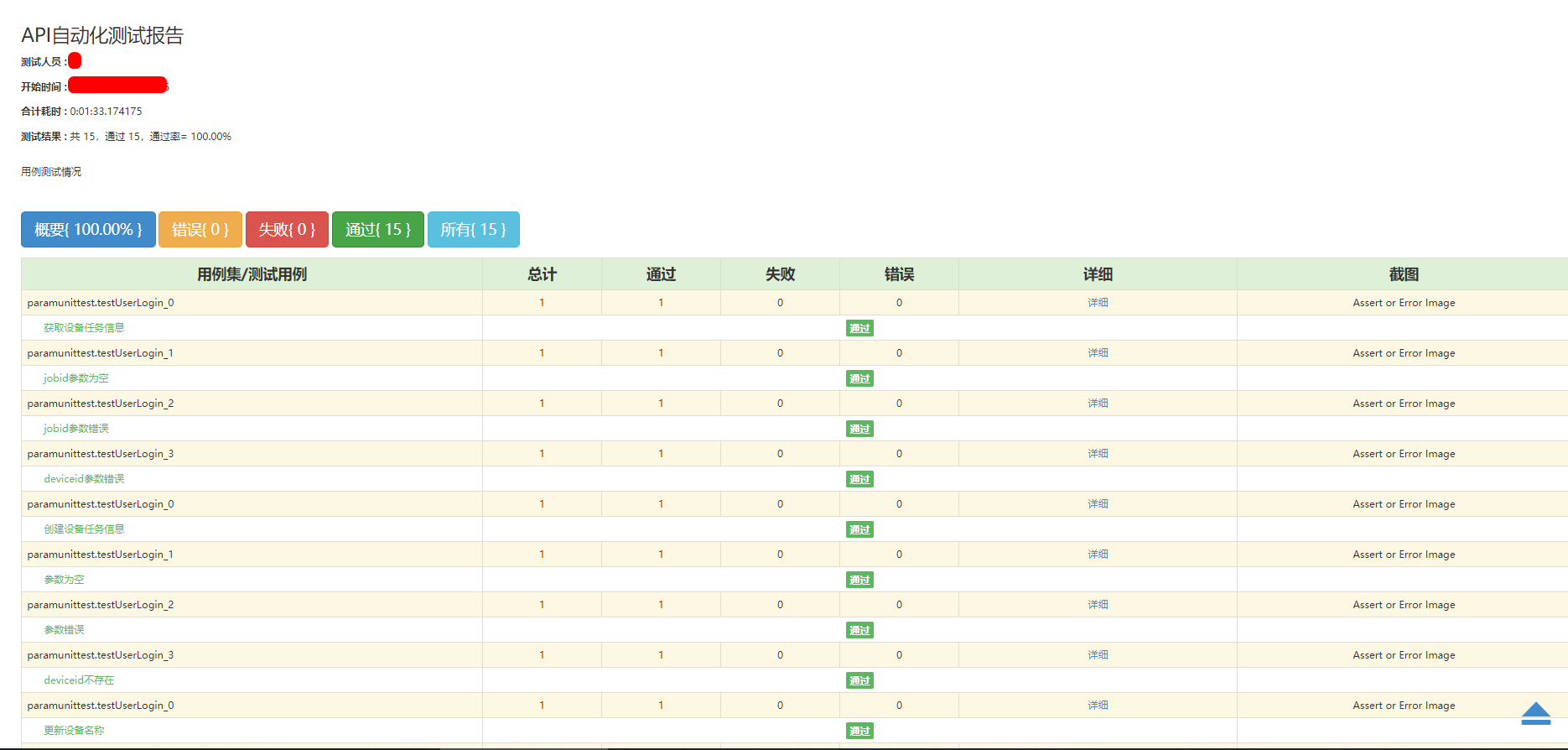一、用例执行主方法
main.py为整个程序执行用例的入口。
main.py
# _*_ coding:utf-8 _*_ import unittest, os, time from Common import getPathInfo, readConfig, HTMLTestRunnerCN_py3,log,sendemail #from tomorrow import threads nowtime = time.strftime("%Y%m%d%H%M%S") log_info = log.Logger().get_logger() on_off=readConfig.Read_Config().get_info('Email','on_off') class All_Test(object): def __init__(self): global report_path path=getPathInfo.get_Path() report_path = os.path.join(path, 'Report') #测试报告存放路径 if not os.path.exists(report_path): #判断Logs路径是否存在 os.mkdir(report_path) #创建Logs文件 self.caselist_path = os.path.join(path, "caselist.txt") #配置执行哪些测试文件的配置文件路径 self.casepath = os.path.join(path, "TestCase") #测试用例路径 self.caselist = [] #定义一个空列表 def get_caselist(self): ''' 读取caselist.txt文件中的用例名称,并添加到caselist元素组 ''' fb = open(self.caselist_path) #打开文件 for value in fb.readlines(): #遍历fb所有数据 if value != '' and not value.startswith('#'): #如果data非空且不以#开头 self.caselist.append(value.replace(' ', '')) #读取每行数据会将换行转换为 ,去掉每行数据中的 fb.close() #关闭文件 return self.caselist #返回caselist def add_case(self): ''' 添加测试用例 ''' self.get_caselist() #获得testcase列表 suite = unittest.TestSuite() #创建测试套件 suite_module = [] #定义一个列表 for case in self.caselist: discover = unittest.defaultTestLoader.discover(self.casepath, pattern=case + '.py',top_level_dir=None) # 加载测试用例 suite_module.append(discover) #将测试用例添加到列表中 if len(suite_module) > 0: #判断suite_module是否存在元素,列表才能判断长度,suite不能判断 for i in suite_module: #如果存在,循环取出元素组内容,命名为suite for j in i: suite.addTest(j) #取出suite_module,使用addTest添加到测试集 return suite #返回测试集 else: return None def send_report(self): "#发送报告到邮件" report_list=os.listdir(report_path) #获得目录所有文件 report_list.sort(key=lambda fn: os.path.getmtime(report_path+"\"+fn)) #按时间顺序排序 file_new=os.path.join(report_path+'\'+report_list[-1]) #找到最新生成的文件 sendemail.send_mail(file_new) #调用email参数 #@threads(6) def run_case(self): '''执行所有的用例, 并把结果写入测试报告''' log_info.info("********************TEST START********************") try: all_case = self.add_case() #调用add_case获取suite if all_case != None: test_name = readConfig.Read_Config().get_info('Report', 'test_name') #获取测试人员姓名 report_title = readConfig.Read_Config().get_info('Report', 'report_title') #获取测试报告名称 fp = open(report_path + '\' + report_title + nowtime + '.html','wb') #定义一个文件对象,给后面的HTMLTestRunner生成测试报告用,注意打开方式必须是wb runner = HTMLTestRunnerCN_py3.HTMLTestRunner(stream=fp, title=report_title, description="用例测试情况",tester=test_name) #生成HTML报告 runner.run(all_case) #执行用例 fp.close() else: log_info.info('---测试套件为空---') except Exception as ex: log_info.error(str(ex)) finally: log_info.info("*********************TEST END*********************") # 判断邮件发送的开关 if on_off == 'on': self.send_report() #发送测试报告 else: print("邮件发送开关关闭") if __name__ == '__main__': result=All_Test() result.run_case()
二、测试报告

以上⑴-⑼章节就是实现接口自动化框架的方法,包含用例集成、用例执行、日志打印、测试报告、邮件发送等功能。
三、源码地址
https://github.com/xiongye105554598/Python_requests_unittest_API.git